 A VERY TIRED Santa waits to board a flight to Detroit Michigan (presumably he was destined for a connection further north) from Akron-Canton, 5:30 Christmas morning, 2009.
A VERY TIRED Santa waits to board a flight to Detroit Michigan (presumably he was destined for a connection further north) from Akron-Canton, 5:30 Christmas morning, 2009.Tom



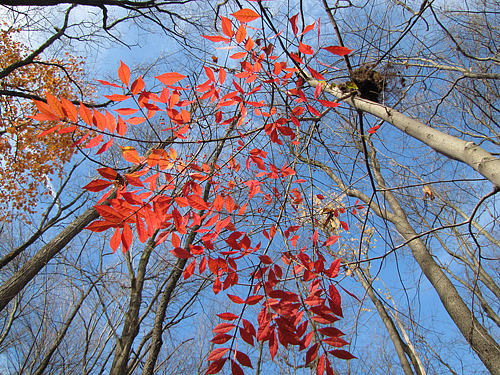
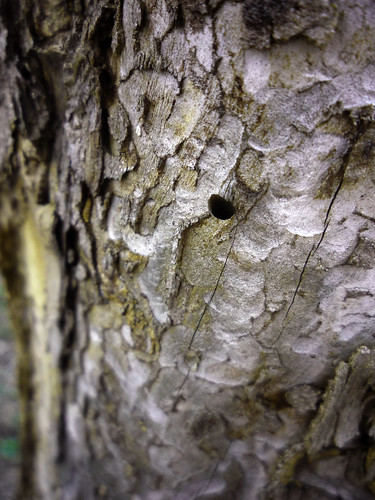
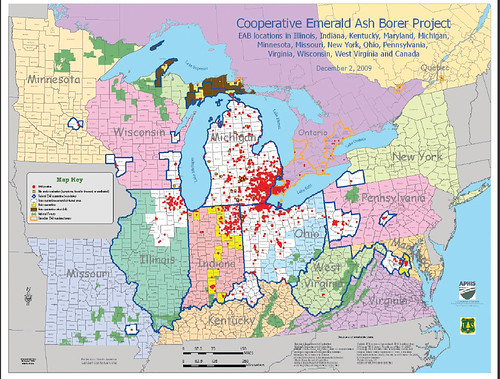

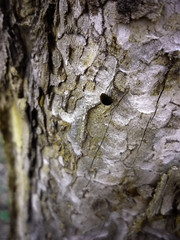
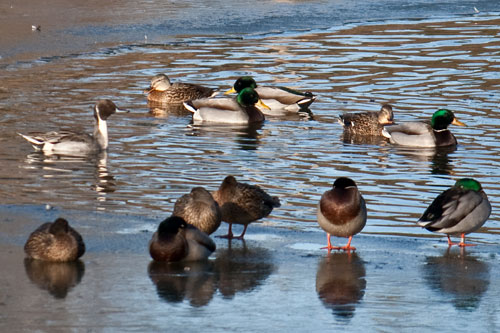 Yesterday afternoon, a beautifully sunny and cold central Ohio day, I stopped at Blendon Woods Metroparks to see what had flown in to Thoreau Lake. There are two great unheated observation buildings at the edge of the lake, and they make bird photography really easy. The building to the right is great for feeder birds, and the left building provides the best opportunities for waterfowl. After scanning the ice free areas of the pond, I could only come up with black ducks, mallards, Canada geese, and two gadwals. But then something caught my eye- a bright white neck. Without binoculars, and without being able to view it with the gigantic metal spotting scope in the building because the bird had positioned itself where it was blocked by the corner support of the building, this bird remained a mystery.
Yesterday afternoon, a beautifully sunny and cold central Ohio day, I stopped at Blendon Woods Metroparks to see what had flown in to Thoreau Lake. There are two great unheated observation buildings at the edge of the lake, and they make bird photography really easy. The building to the right is great for feeder birds, and the left building provides the best opportunities for waterfowl. After scanning the ice free areas of the pond, I could only come up with black ducks, mallards, Canada geese, and two gadwals. But then something caught my eye- a bright white neck. Without binoculars, and without being able to view it with the gigantic metal spotting scope in the building because the bird had positioned itself where it was blocked by the corner support of the building, this bird remained a mystery. Hi All- I'm messing with the layout of The Ohio Nature Blog today. My goal is to expand the images that I can easily show from 400 pixels to 500 pixels. I think those extra pixels will make a big difference when it comes down viewing my photographs. Also- I figured out how to keep the text width fairly narrow, and hopefully the blog will still be easy to read. Consider this a test post.
Tom











 Walter's violet, Viola walteri. Very much a southerner, southern Ohio is the furthest north this species grows in the U.S. It is an Ohio threatened species.
Walter's violet, Viola walteri. Very much a southerner, southern Ohio is the furthest north this species grows in the U.S. It is an Ohio threatened species. Tall larkspur, Delphinium exaltatum I had only seen this species once before, at a fen near Springfield, Ohio. Beautiful when flowering, this species is rare throughout its range, and is a candidate for federal listing by the United State Fish and Wildlife Service.
Tall larkspur, Delphinium exaltatum I had only seen this species once before, at a fen near Springfield, Ohio. Beautiful when flowering, this species is rare throughout its range, and is a candidate for federal listing by the United State Fish and Wildlife Service.  And one of my personal favorite pteridophytes, walking fern, Asplenium rhizophyllum. This one doesn't seem particular to calcareous habitats, however, it does seem to be fairly frequent on the dolomite gorges of southern and southeast Ohio.
And one of my personal favorite pteridophytes, walking fern, Asplenium rhizophyllum. This one doesn't seem particular to calcareous habitats, however, it does seem to be fairly frequent on the dolomite gorges of southern and southeast Ohio. Last Friday before the moss workshop, I had the fortune to visit several State Nature Preserves in Adams County. The first stop of the day was Adams Lake Prairie State Nature Preserve, where I found the blackjack oak seen in the oak quiz post. There are some top notch botanists who identified this oak right away- some without ever seeing it in the field.
Last Friday before the moss workshop, I had the fortune to visit several State Nature Preserves in Adams County. The first stop of the day was Adams Lake Prairie State Nature Preserve, where I found the blackjack oak seen in the oak quiz post. There are some top notch botanists who identified this oak right away- some without ever seeing it in the field.